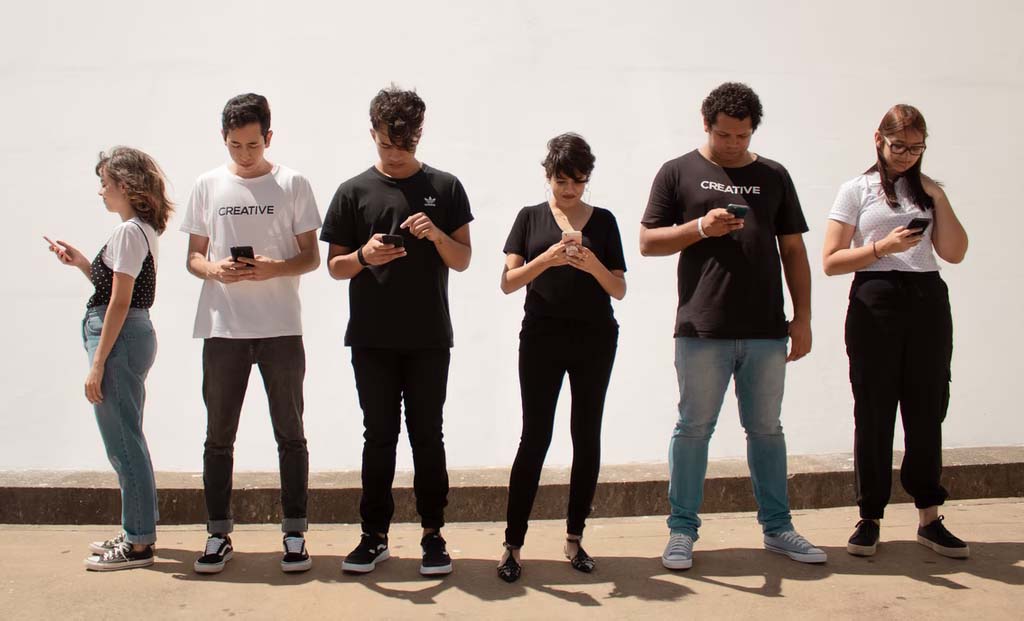Today’s blog post is a guest column from a longtime friend of the Gurian Institute, Paul Cumbo. Paul is a teacher at Canisius High School in Buffalo, N.Y., author of Wilderness Therapy and other books, and Co-Founder of the Camino Institute. “Sure,” Paul writes, “your kids will probably use social media sooner or later, but we should do everything we can to make it later. Meanwhile, parents and educators should arm kids with the knowledge and understanding they need to stave off its worst effects.”
Michael Gurian and the GI team are passionate about this topic, including a solution-oriented approach to inevitable digital life. In the last six months especially, the national media has begun to report science-based evidence of social media’s dangers to social-emotional and cognitive development of children and teens. Thank you, Paul Cumbo, for capturing the key points of the research in this powerful and concise article.
Social media has its uses. For example, you’re probably reading this because it found its way to you via an online network. Staying in touch with distant friends is easier than it would be without it. But I’m pretty sure that when it comes to kids, the usefulness and benefits are overshadowed by the liabilities.
As a veteran high school teacher, I have watched the internet transform adolescence over the past twenty years. Among the adult population, social media is a mixed bag at best. But for kids, including teens? Despite (perhaps) some limited benefits, on net it’s bad news. Here are eight reasons why.
1: It’s relentlessly addictive. It’s bottomless and exploits the dopamine feedback cycle. It creates a craving to click. If you use it, you know it. I’ve felt that draw on a visceral level in my forties. I can imagine the pull it must have on a teenager still developing a pre-frontal cortex.
2: It’s a time vortex. Because it’s so addictive, it’s easy to spend hours per day lost in the endless feeds and rabbit holes. Numerous studies reveal that it isn’t unusual at all for teenagers spend, cumulatively, several hours per day absorbed in social media—instead of with family, friends, or other pursuits.
3: It harms sleep. Anyone who works with kids knows how vital adequate sleep is, and also how many factors already interfere with it. Piling on with melatonin-suppressing screen exposure is compounding the sleep deficiency problem.
4: It erodes independent thinking. It is algorithmically designed to exploit cognitive heuristics, bolstering tribalism amidst echo chambers. As a teacher dedicated to inquiry and diversity of thought, the general tendency it engenders toward reductive ideologies scares me.
5: It amplifies uninformed opinions. Much—maybe most—of what kids are consuming is produced not by older, wiser adults, but by their peers or a few sophomoric influencers. Much of it is impulsive, emotionally charged, and lacks context. If you hadn’t heard, kids are pretty darn impressionable.
6: It’s a gateway to porn. This wreaks havoc on adolescent psychosexual development, creating process addiction while desensitizing kids to depraved stuff. Teenage guys with smartphones have little chance of avoiding a porn habit that warps sexuality. While teenage girls consume far less porn, they bear the burdens of a hypersexualized culture with twisted expectations.
7: It contributes to insecurity and anxiety. Plenty of research indicates that social media has detrimental effects on kids’ sense of self-worth. But you don’t need a PhD to know that a constant stream of curated imagery against which to compare oneself will compound a teen’s insecurities.
8: It jeopardizes future opportunities. Kids have lost the innocence of being able to make mistakes in private. Teenagers say and do impulsive things. Social media publishes and shares the ugly underbelly of adolescence. As kids navigate these tricky years, they do so with the added anxiety of knowing their worst moments might be digitally preserved in perpetuity. Screen shots are forever.
I was fortunate to be raised in a pre-internet era, and maybe you were too. My formative years were not shaped by an onslaught of ill-informed, ideologically-driven, subjective content sprung forth for all to see from the more impulsive moments of emotional fervor or careless impulse. I wasn’t exposed to a limitless supply of explicit content. I was never in danger of publishing a careless or impulsive thought or image for all the world to see and judge me by. When I did something stupid or risky, I wasn’t surrounded with cameras connected to live feeds available to the entire world.
Today’s kids are not so fortunate. We can’t shelter kids forever, but we can up to a point—and parents owe it to our kids to hold the line. When the time is right to allow them to venture into the online landscape, we have to help them understand it.
Inevitably, they’ll ask us why we use it if they shouldn’t. This is, frankly, as simple as making some straightforward analogies. There are many things limited by age, such as voting and driving, to name just a couple. We shouldn’t be fear mongers or alarmists, but we should share the abundant data about the effects of social media with them. We can help them understand why social media won’t add much to their life, but will probably take at least something away. We should appeal to their intelligence and their desire to grow in healthy ways by arming them with knowledge and understanding. If we don’t, they’ll resent us for it later—and with good reason.
–Paul Cumbo
For more on this topic from the Gurian Institute, check out Michael Gurian’s books, The Minds of Girls and Saving Our Sons.
Save the Date: we will also provide information and resources on this topic at our Summer Training Institute in June. For more information and to register, click: https://gurianinstitute.com/events/gurian-summer-institute-2022/.










